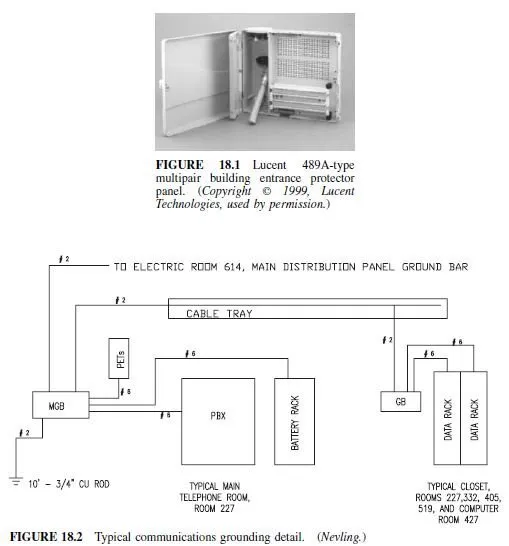Proper grounding is essential for safety of personnel, for the proper operation of equipment, and for the protection of property.
References Literature
a. The IEEE Green Book which contains IEEE Standard 142, Recommended Practice
for Grounding Industrial and Commercial Power Systems.
b. The IEEE Emerald Book which contains IEEE Standard 1100, Recommended Practice for Grounding Sensitive Electronic Equipment.
c. ANSI/TIA/EIA Standard 607, Commercial Building Grounding and Bonding
Requirements for Telecommunications.
d. NEC, Article 250 concerning grounding.
e. NEC, Article 800, Section D concerning communications circuits grounding.
f. NFPA 780, Lightning Protection Code.
Typical communications grounding includes bonding all metal frames and equipment in a communications room or closet to a ground bar in the room and connecting all rooms together. At the main communications room, a ground rod is provided as well as bonding to the electrical system. Protected entrance terminals (Fig. 18.1) are grounded so that a lightning strike or surge will be taken to ground.
Please note that the diagram in Fig. 18.2 is an example only and does not portray all of the requirements of the above-mentioned codes.



